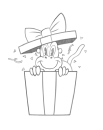Check out the premium course for additional lessons, demos, assignments and critiques!
Hi everyone, I'm here to help you dive into using color in your digital paintings. When we talk about color, there are three main aspects: hue, saturation, and value.
Hue
Hue is the name of the color, red, green, blue, etc. The color wheel displays the different hues in a circular format. You'll find a hue wheel in any digital painting app's color picker, like Photoshop or Procreate.
Some apps might show a vertical hue strip instead of a wheel, which is simply the color wheel unwound. Personally, I find this format friendlier.
In color theory, the primary colors are red, blue, and yellow. They can't be created by mixing other colors, but mixing them gives you secondary colors like orange, green, and violet. On the color wheel, these secondary colors sit between the primaries.
Saturation
Saturation is the intensity or vibrancy of a hue. A color can range from very saturated (vibrant) to desaturated (closer to gray).
When we desaturate a color, we bring it closer to gray. Gray is important because it connects all hues, acting as a bridge between colors. Desaturated or neutral colors often create a more pleasing visual aesthetic.
For example, painting with very saturated colors can feel overwhelming. By desaturating them, the colors harmonize and feel more cohesive.
Value
Value refers to the lightness or darkness of a color, independent of hue and saturation. Even in grayscale, we perceive value through tones from white to black.
Value is crucial because it defines the light and form in art. That's why even without color, an image can still convey its message. Many artists practice in grayscale before adding color to focus on value.
Value isn't represented on the color wheel. Two colors can have the same hue but different values. Doing value studies enhances your understanding of form and improves your color work.
Check out the premium course for additional lessons, demos, assignments and critiques!













